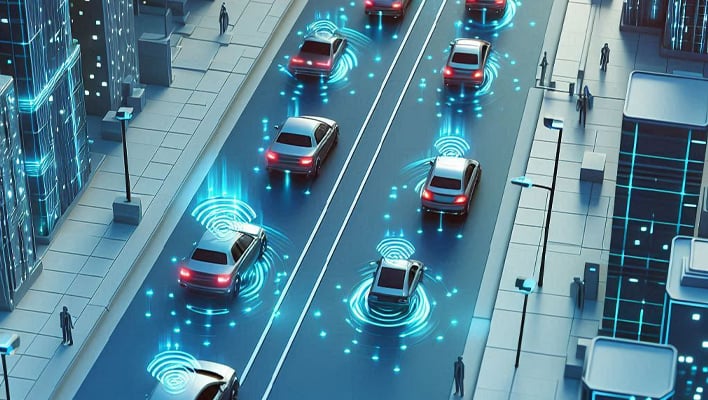
Driving is a way of life in the United States, which has led it to have the world’s highest rate of car ownership. It also has tens of thousands of traffic fatalities every year. The US Department of Transportation (DOT) has devised a plan to reduce the danger by giving cars the ability to “see” other vehicles on the road. The agency’s new vehicle-to-everything (V2X) initiative could change the way we drive, but it won’t happen overnight.
The goal of V2X is to allow cars to remain aware of where other cars are on the road. The system could also extend to pedestrians, cyclists, and road infrastructure. The system would ensure that cars can share not only their location but also speed and road conditions. However, this capability will require the deployment of new technology in cars, mobile devices, and infrastructure.
In the National V2X Deployment Plan (PDF), the DOT proposes using a slice of wireless spectrum around 5.895-5.925GHz (5GHz spectrum) for V2X. The system would rely on both direct vehicle-to-vehicle communication, as well as network-level data sharing to give vehicles a better idea of where they are and what other objects on the road are doing in real-time. The agency plans to work with other parts of the government to support the regulatory and technological aspects of the process in phases, ending with full V2X availability in the mid 2030s.
In terms of the technology itself, major semiconductor players like Qualcomm have been pioneering solutions in the V2X space for years now, so these concepts and solutions for them are hardly new. However, it’s good to see the US government finally now on board.
If the government moves forward with V2X, the initial deployment will run until 2028, when the agency estimates it could have V2X infrastructure installed across 20% of the National Highway System and 25% of traffic signals in large metro areas. Over the next few years, the DOT believes commercial interest in supporting V2X will grow, and a full nationwide rollout will pick up in the early 2030s. By 2036, the DOT hopes to have V2X operational on all highways, as well as on almost all surface streets of the top 75 metro areas. The completed system could prevent “up to 615,000 crashes” per year, according to the National Traffic Safety Board (NTSB).

A web of road data from V2X could help us turn the corner in vehicle autonomy. We’ve seen systems like Tesla Autopilot perform some impressive feats of self-driving, but there’s also ample evidence these systems can’t handle complex traffic and road conditions as well as human drivers. V2X could give cars vital data to make autonomous and semi-autonomous features more reliable. We would never have to wonder if a Tesla’s camera-only vision system would understand that there’s an emergency vehicle on the side of the road—if it supported V2X, the computer would know with complete certainty where the obstacle is.
So far, the DOT has only issued $60 million in grants for the development of V2X technology, and the future largely depends on who’s running the federal government in a few months. The DOT began work on a similar initiative during the Obama administration, but that program was canceled during the Trump administration. Even with the uncertainty, the DOT wants to get this project moving because of the potential it has to save lives.